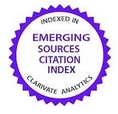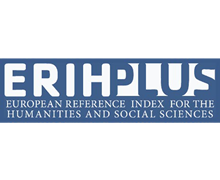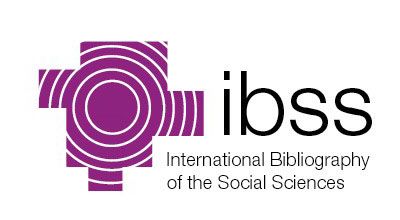Submissions
Submission Preparation Checklist
As part of the submission process, authors are required to check off their submission's compliance with all of the following items, and submissions may be returned to authors that do not adhere to these guidelines.-
The submission has not been previously published or submitted to another journal.
- The file sent is in Microsoft Word, RTF, or WordPerfect format.
- Web addresses and DOI have been added for references where it has been possible.
- Text has simple line spacing (1.0); The font size is 12 points Times New Roman; The margins are all 3 cm; Italics are used instead of underlining (excepting URLs); And all illustrations, figures and tables are within the text in the place that corresponds to them and not at the end of the whole.
- The text fullfills all the bibliographical and style requirements indicated in Author Guideline, which can be found in About the journal.
-
As the contributions are sent to peer review, there will be assured to follow the instructions given at: http://www.revistas.unal.edu.co/index.php/hisysoc/about/submissions#authorGuidelines
Section Policies
Editorial
Section that presents the contents of each number. It is written by the director-editor or by guest editors (in case of a dossier)
Dossier
Section that gathers unpublished research or review papers on a specific topic. The texts present research results obtained from primary sources, methodologies and up to date literature.
Open topic
Section that gathers research or review papers on diverse topics. The texts present research results obtained from primary sources, methodologies and up to date literature.
Document transcription
Section that gathers critical transcriptions of documents from historical archives and from other patrimonial repositories.
Book review
Section that gathers critical reviews of history books published in the past 3 years. Book reviews are selected by the editorial team.
Events
Reviews of academic events about history or scientific journals. They have the approval of the director of the journal and of the editorial board.
News
Offer titles on theoretical, methodological or historiographical books written and published recently by historians. It could be also considered titles with historical focus coming from humanities and social sciences.
Erratum
Clarifications about exceptional situations happened in the editorial process of the previous published issues. They have the approval of the director and editor of the journal.
Copyright Notice
Copyrights in open access policy
Those authors, who have publications with this journal, accept the following terms:
a) The authors will retain their copyright and will guarantee to the journal the right of first publication of their work, which will be simultaneously subject to the Creative Commons Attribution License (CC BY-NC-ND 4.0) that allows third parties to share the work as long as the authors names and their first publication in this journal is indicated.
b) Authors can adopt other non-exclusive license agreements to distribute the version of the published work (e.g. To be deposited in an institutional telematic file or published in a monographic volume) as long as the initial publication in this journal is indicated.
c) It will be allowed and authors will be encouraged to disseminate their work through Internet (e.g. in institutional telematic files or on their website) before and during the submission process, which can produce interesting exchanges and increase the number of citations of the published work. (See the open access effect).







































